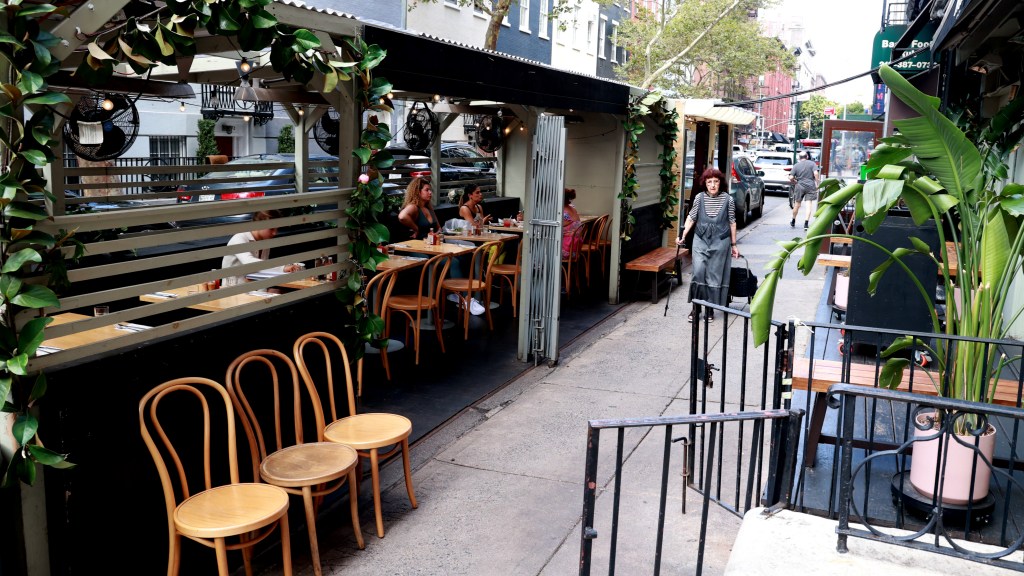Yesterday ended a brief new era and began a new new era: Outdoor dining as we knew it for a few years — those sheds beautiful, ugly and in between that sprung up as an emergency program during COVID — is going bye-bye, getting replaced with something much more standardized, the result of deliberation and legislative compromise.
This is unfortunately one step forward and two steps back, in a compromise Mayor Adams agreed to with the City Council.
Back when the legislation finalizing the new program became law, we said some nice things about how the permanent program fixed flaws in the ad hoc one. It’s good that sheds are all going to be accessible to people using wheelchairs. It’s good that design rules will ensure more consistency of look; truly ramshackle structures were and still are a blight on too many blocks, and they too often became magnets for vagrants and for rats.
And it’s good that the structures will all be overseen by the Department of Transportation, which has the responsibility to inspect and the power to levy fines.
But we underestimated the effect of two major changes. The first mistake was requiring in-the-street seating structures to be broken down and rebuilt every single year rather than allowing them to stay in place year-round, a concession to car owners who want as many curbside spaces as possible for as much time as possible. Private cars aren’t entitled to those precious slices of real estate any more than private businesses are, and in many cases a higher, better use is handing them over to restaurants that, while for-profit, are open to the public.
The now-seasonal nature of the program means restaurants operating on razor-thin margins and spending thousands of dollars to build structures in the first place must also now spend thousands more to break them down, store them in the winter months, and rebuild them.
The second is an overly complicated application and approval process that sometimes includes a public hearing and that, according to the DOT, “may take up to six months.”
As a result, outdoor dining is set to shrink from about 13,000 restaurants that used it some extent since 2020, to a small fraction of that number. Just 1,911 applicants have sought sidewalk permits and only 1,315 submitted for roadway approval, which was the major innovation. There are 634 establishments that did both, so it makes for a total of 2,592 restaurants.
The result will be diminished street life all across New York, and fewer jobs for service workers, and quite possibly a growing number of restaurants that realize they can’t hack it in this city. That would be a true tragedy — because restaurants, every bit as much as our parks and the arts, set America’s largest and best city apart from all others. They define our neighborhoods and bring people together.
We understand and appreciate the complaints about some street sheds. Adjustments to the program were required. But rather than strike a healthy new equilibrium, the rules have decimated what was a true pandemic innovation, one that not only threw a lifeline to the restaurants that define so many neighborhoods but gave many commercial strips an infusion of energy. Pour one out for street dining as we knew it, and unfortunately, do it indoors.
